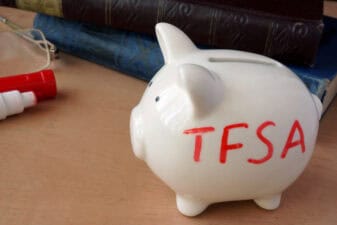The federal government is reporting that, as of August 2, 2020, roughly 47% of Canada’s labour market received the Canada Emergency Response Benefit (CERB). Families are grateful for the CERB because the taxable benefit keeps household finances generally stable. However, a clean-up is ongoing due to inadvertent payments.
Since June 3, 2020, about 190,000 Canadians had to repay their CERB cheques. The Canada Revenue Agency (CRA) said the repayments are from people who were not eligible for CERB. The latest data shows that 221,320 received payments from both the CRA and Service Canada, which amounts to $442.6 million in double payments.
Retaking the CERB
The CRA has a repayment process to take back from anyone found to be ineligible to receive CERB. If you mistakenly received payments, you can repay or send back the cheque to where it came from, either the CRA or Service Canada. A spokesperson from the office of the Minister of Revenue said 500,000 had reimbursed the CRA.
Repayment scenarios
There are repayment scenarios you should be mindful of to determine if you must give back your CERB. The following are the conditions for a return: a) You received CERB but earned employment or self-employment income suddenly or earlier than expected within the four-week period; b) You applied for the taxable benefit only to realize later you’re not eligible; and c) You received CERB payment from both the CRA and Service Canada for the same period.
Meeting the eligibility requirements is the most crucial aspect. Only eligible people should be receiving CERB. Also, the CRA and Service Canada are ensuring no individual will receive more than the maximum allowable $12,000 in the course of the program (24 weeks to include the extension period).
Endless income stream
You can defy or drive away pandemic-induced fears by having an endless income stream and not stop-gap economic support. The Royal Bank of Canada (TSX:RY)(NYSE:RY) is the ever-reliable income-provider. You would be investing in the largest bank in Canada that has been paying dividends for 150 years.
With a strong dividend history and steady growth since the beginning of the new millennium, you can expect sustained income for another 150 years. At the current share price of $97.66 and a dividend yield of 4.42%, it is well worth the money you will invest. Start with $20,000, and you generate $884 in passive income.
Canada’s biggest lender is adapting to the new normal and will be extending work-from-home plans into 2021. According to RBC’s chief human resources officer, the bank will exercise flexibility wherever possible to ensure and health, safety and well-being of its employees.
Changing the mindset
There’s no doubt that federal assistance programs like CERB are valuable to alleviate financial anxiety during the health crisis. But a positive outcome of COVID-19 is that Canadians are starting to spend less and be frugal.
But if you have CERB issues that require a return of inadvertent or mistaken payments, do so without delay. Once you get it out of the way, it is ripe to think about investing before spending. The COVID-19 recession might take longer than expected.







